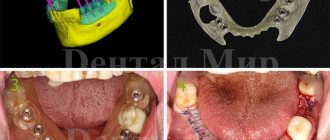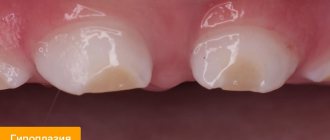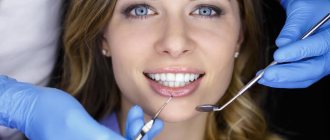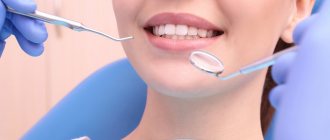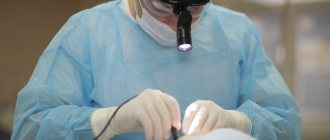Stages of sedation Types When treating children Possible complications Indications Preparation for the procedure Contraindications Anesthesia Alternatives
There are few people in the world who are not afraid of a visit to the dentist. Against the backdrop of such a widespread phobia, calls are increasingly being made to undergo treatment under sedation, without pain. What is it and is this method as safe as they say?
Dental treatment under anesthesia in adults is carried out in rare cases, more often in hospitals. But sedation is more common. This method causes inhibition of the nervous system to reduce panic and stress during the procedure. There is contact with the doctor, the patient is able to respond to stimuli. With this method of anesthesia, the patient breathes on his own, all his reflexes are preserved. This is the main difference between sedation and anesthesia, in which the degree of inhibition reaches such a level that consciousness turns off, reflexes are not preserved, and the patient does not respond to physical and verbal stimuli. The main purpose of anesthesia is to put the patient into a state in which he does not feel anything.
The main goal of sedation is not to harm the patient’s health, so before the procedure it is necessary to do a full examination of the body and obtain a conclusion from a general practitioner and anesthesiologist.
Sedation will help:
- relax during an unpleasant or painful procedure;
- perform local anesthesia without tension and fear;
- provide comfort, moral and physical;
- create a calm environment for the dentist to work.
Types of combined anesthesia
- Neuroleptanelgesia. The method involves a combination of antipsychotic and narcotic drugs. In this case, antipsychotics have an inhibitory effect on the nervous system, and narcotic substances enhance the analgesic effect. The drugs most often used are: etapyrazine, aminazine, droperidol and haloperidol;
- Intubation anesthesia. The substance enters the respiratory system using a laryngeal mask. Due to its complexity, this method is also not used often.
Ataralgesia. The combination of analgesics and tranquilizers gives a calming, relaxing and analgesic effect. The most commonly used tranquilizer components are: Relanium, Elenium, Phenazepam and Grandaxin.
Classification of complications associated with taking local anesthetics:
1) Toxic effect
– convulsions, hypotension, respiratory arrest and circulatory collapse, drowsiness, muscle fasciculations, ventricular arrhythmias, fibrillations, etc. Toxic reactions are the most common. Systemic toxic effects result from absorption or intravenous injection of local anesthetic into the systemic circulation. The cardiotoxicity and neurotoxicity of local anesthetics are directly related to the plasma concentrations of these drugs. The toxic threshold concentration may be exceeded as a result of accidental intravascular injection, overdose, or as a result of prolonged infusion of the drug.
2)
Pseudoallergic reactions (PAR).
They are more common in women from 40 to 80 years of age, especially with concomitant chronic diseases of the gastrointestinal tract, hepatobiliary system, kidneys and neuroendocrine system. The clinical symptoms of PAR are varied and correspond to the clinic of true allergic reactions, although the mechanisms of development differ from the latter. The most severe are: anaphylactoid shock, skin manifestations (toxicoderma, rashes, dermatitis), vegetative-vascular reactions.
3) Effect on the central nervous system
(exciting or calming): nervousness, fear, euphoria, confusion, dizziness, drowsiness, blurred vision or double vision, increased or decreased temperature, stupor, twitching, tremors, convulsions, loss of consciousness, depression and respiratory arrest.
Manifestations of excitement may be short-lived or not occur at all, while the first manifestation of intoxication may be drowsiness, turning into unconsciousness, and respiratory arrest.
4) Effect on the cardiovascular system
(usually depressant): bradycardia (decreased heart rate), hypotension, cardiovascular collapse, which may lead to cardiac arrest.
Symptoms of depressed cardiovascular function may usually occur due to a vasovagal reaction, especially if the patient is in an upright position. Less commonly, they may result from a direct effect of the drug.
5) Local reactions
– swelling and inflammation at the injection site, the appearance of ischemic zones at the injection site (up to the development of tissue necrosis - in case of accidental intravascular injection); nerve damage (up to the development of paralysis) - occurs only when the injection technique is violated.
6)
Side effects due to altered sensitivity to local anesthetics.
7)
Idiosyncrasy (reduced sensitivity).
True allergy
- hyperemia and itching of the skin, conjunctivitis, rhinitis, Quincke's edema of varying severity (including swelling of the upper and/or lower lip and/or cheeks, glottis with difficulty swallowing, urticaria, difficulty breathing), anaphylactic shock.
Introduction of anesthesia: step-by-step description
- Introduction to a state of anesthesia.
- Analgesia. The duration of the stage is approximately 4-5 minutes. At this time, the patient's pain sensitivity decreases, but all reflexes and stable body temperature are preserved.
- Excitation. The duration of the stage is 7 minutes. During this period, the following are observed: instability of pulse and temperature, increased salivation and muscle tone.
- Maintaining anesthesia. This stage is conditionally divided into several stages-levels:
- Surface. The following are noted: normalization of pulse and pressure, muscle tone with complete blocking of sensitivity;
- Easy. Characterized by rhythmic breathing and muscle relaxation. At this point, the doctor can already begin initial, superficial manipulations;
- Full anesthesia. There is complete relaxation of the muscles, rhythmicity of the pulse and breathing, and a slight decrease in blood pressure;
- Ultra-deep anesthesia. Characterized by shallow breathing, weak pulse and low blood pressure.
After completing the manipulations, the supply of the anesthetic substance is stopped and it is replaced with pure oxygen for 2-3 minutes. It is during this interval that the patient awakens, and after 30 minutes his complete recovery is observed.
How is dental treatment performed under anesthesia in adults?
How is dental treatment performed under anesthesia in dentistry? First, you need to come for a consultation at the clinic to discuss dental treatment under general anesthesia.
The duration of anesthesia is determined depending on the patient’s age, his state of health and the required amount of treatment. Throughout the operation, the patient's condition is monitored by an anesthesiologist. It controls the vital functions of all organs. Upon recovery from anesthesia, reflexes gradually begin to recover; this takes about five minutes, but the anesthesiologist continues to monitor the patient for some time. A person goes home, as a rule, accompanied by someone. Under no circumstances is it recommended to drive a car after anesthesia.
The main nuances and disadvantages of treatment under general anesthesia
There are a number of disadvantages in the question “ is it possible to treat teeth under general anesthesia ”:
- There is an increased load on the pulmonary and cardiovascular systems;
- Post-anesthesia symptoms are common: nausea, vomiting and weakness;
- Due to limited time, it is possible that the selection of filling material is insufficiently high-quality and the treatment process is disrupted, which consists in the impossibility of preserving the anatomical forms of the tooth being restored.
All manipulations when working with general anesthesia are carried out by: a dentist, a nurse and an anesthesiologist. Throughout the procedure, the operation of all vital systems is constantly monitored.
Anesthesia in dentistry
There are medical terms that in ordinary life lose their meaning or acquire additional meaning. One example is the expression “to treat teeth under anesthesia.” In 99% of cases, this expression refers to ordinary sedation. Due to a common mistake, even dentists sometimes use the term “anesthesia,” although this means depression of consciousness with preservation of reflexes and responses.
Dental treatment under general anesthesia is performed extremely rarely. Its administration requires special equipment and conditions. Usually, this happens in a hospital, by an oral and maxillofacial surgeon, as a procedure accompanying the operation. During manipulation, constant monitoring of blood pressure, heart rate, respiratory rate, and blood oxygen saturation is required.
General anesthesia during dental treatment means a complete shutdown of consciousness, including protective reflexes, which can be dangerous. The patient should not choose the method of pain relief himself; this can only be done by a doctor after a certain examination.
Premedications
- Sedatives of plant origin (Corvalol, tinctures of motherwort and valerian). Necessary to reduce excitability.
- Neuroleptics (droperidine).
- Anticholinergic drugs.
- Opioid drugs (promedol and morphine).
The selection of the listed drugs is made by the attending physician, based on the specific situation and individual characteristics of the small patient. There must be a compelling reason to use general anesthesia in children.
The drug "Sevoran" in modern pediatric dentistry
It is difficult to imagine modern pediatric dentistry without anesthesia - young patients cannot always tell what exactly is hurting them, and do not allow the doctor to do a full examination. Until recently, young children did not receive dental treatment, which was fraught with damage to baby teeth, and as a result, permanent teeth could form incorrectly. Treatment and removal of teeth under anesthesia is an excellent option for pediatric dentistry.
The drug Sevoran (sevoflurane), produced by Abbott Laboratories, is often used as dental anesthesia in children's clinics. It is believed that Sevoran is one of the safest drugs for anesthesia today.
The main active ingredient of Sevoran is sevoflurane. The drug is supplied in liquid form, packaged in dark 250 ml bottles. Before use, Sevoran is poured into an evaporator, where it turns into a gaseous state and provides the child with inhalation anesthesia.
Kon is adjusted using an anesthesia machine, which helps influence the duration and depth of dental anesthesia. Using Sevoran, you can perform not only treatment or tooth extraction, but also other surgical procedures such as removal of a defect in the frenulum of the lip or tongue.
“Sevoran” has established itself as a safe drug with minimal side effects, and although it is used quite rarely for adults, in pediatric dentistry it is indispensable for the treatment and removal of teeth under anesthesia.
Types of modern anesthesia
Application - local use of an anesthetic spray or gel.
Applicable:
- During professional teeth cleaning;
- When removing baby teeth;
- When removing fragments of a damaged tooth.
Infiltration. An anesthetic is injected into the apex of the tooth root. As a result, the nerve endings are blocked and the teeth lose sensitivity. The anesthesia method allows you to:
- Complete treatment of upper jaw teeth;
- Treatment of the anterior teeth of the lower jaw;
- Minor operations on the alveolar process.
Conduction - injection of medication to the branches of the trigeminal nerve. As a result, the transmission of the nerve impulse is blocked.
Used:
- When treating lower jaw teeth;
- If it is impossible to use other methods due to the inflammatory process.
This technique is difficult to perform and can cause pain, but the result is a lasting effect for a long time.
Dental treatment under general anesthesia
– They say that the use of general anesthesia in dentistry is harmful to health. Is there a risk from anesthesia during dental treatment?
The drugs used today for anesthesia have no side effects and do not have a negative effect on the human body. After examining patients who received dental care under general anesthesia, no pathologies were identified in any case.
– Do I need to have documents with me to undergo treatment or have a tooth removed under general anesthesia? If yes, which ones?
If a person has reached the age of majority, we serve him. Dental treatment under general anesthesia is carried out at the request of the patient.
– How many teeth can be treated under general anesthesia?
It is possible to treat from 4 to 32 teeth.
– Some dentists say that dental treatment should not be performed under general anesthesia. However, is this question purely within the competence of the doctor and the patient himself cannot decide how to be treated by a dentist?
Any method used in treatment has pros and cons, indications and contraindications, and possible negative consequences. To minimize negative effects, the doctor will select the one that is most suitable for you. You should know that dental treatment under general anesthesia has its own specifics: a permit to operate is required (you cannot work without a license), special equipment and an anesthesiologist are required. Considerable importance is also given to the experience of doctors.
– I need to get a filling, but I’m scared. They said that no one would treat one tooth under general anesthesia. Is it so?
Any number of teeth can be treated using general anesthesia, but consider contraindications.
– Is it necessary to prepare in advance for dental treatment using general anesthesia?
If dental surgery is planned (including outpatient surgery), you should refrain from eating. You can eat 6 hours before treatment, and drink 4 hours before. Plan your daily schedule in such a way that you do not have to do work that requires increased attention and precision. You will also not be allowed to drive a car. Important meetings and negotiations should not be scheduled on the first day after treatment under anesthesia. In addition, you should know that at the end of treatment under anesthesia, we do not have the right to send a person home unaccompanied, so arrange with someone who can help. Also, the anesthesiologist should be notified of all existing chronic diseases and allergic reactions, because the type of anesthesia will have to be selected individually.
– Are there any contraindications for dental treatment under general anesthesia, and what are they?
Issues related to the need to use general anesthesia are resolved on an individual basis.
– I’m afraid of pain, and my teeth need to be treated once every six months. Can anesthesia be used that often?
We use modern drugs for anesthesia. For each patient, the anesthesiologist selects an individual anesthesia regimen. The drugs do not cause side effects or addiction and are eliminated from the body quickly. Therefore, anesthesia can be performed once every six months without fear of harm to health.
– What is the difference between anesthesia and general anesthesia?
It should be clarified that the term “general anesthesia” is used in everyday life; in medicine there is anesthesia and there is local anesthesia. In the first case, the person loses consciousness; surgery is performed while the patient is asleep under the influence of the medication. The concepts of “anesthesia” and “general anesthesia” should be considered synonymous, that is, it is equally acceptable to say either “anesthesia” or “general anesthesia”. In the second case, the person is fully aware of himself and what is happening around him; only the peripheral nerve fibers responsible for sensitivity to pain are blocked.
– What drugs do your anesthesiologists use?
All medications approved for intravenous anesthesia in the Russian Federation are available to our anesthesiologists. For each patient, the doctor selects the optimal regimen.
– What does a dentist manage to do during a 20-minute general anesthesia?
During this time you can do quite a lot:
- remove from 1 to 10 teeth;
- carry out depulpation of a single-rooted tooth;
- grind from 1 to 5 teeth for the upcoming installation of dentures;
- install a light seal;
- prepare three to five carious cavities for filling;
- straighten a dislocated jaw;
- open and clean out an abscess or periostitis;
- perform a jaw osteotomy in the area of 1–5 teeth;
- carry out curettage of holes that have become inflamed after tooth extraction.
– Some doctors say that it is difficult to treat teeth under anesthesia and the quality is poor. But a friend of mine has been treating his teeth this way for a decade and a half and is happy with it. Who to believe?
The fact is that not all doctors can treat under general anesthesia, because they simply do not know how. This requires certain knowledge, skills and experience, therefore treatment and removal of teeth using anesthesia is possible only in reputable dental clinics that have a license, equipment and the necessary staff of doctors. The Implantation and Dentistry Centers INTAN correspond to these parameters.
– How long has dental treatment been carried out under anesthesia?
Anesthesia was first used more than 170 years ago - in 1846. And it was the dentist who performed the operation using general anesthesia. An interesting fact: for the first time, teeth were treated using local anesthesia only 35 years later - in 1881.
– Are there deaths during dental treatment under local anesthesia?
Yes, there are. For example, in the case of individual intolerance to drugs.
The answers were prepared jointly with the Chief Doctor of our center on Bolshaya Porokhovskaya, 33, Andrey Sergeevich Lipatov.
When can you treat teeth without anesthesia?
Some parents think that treatment of baby teeth does not require anesthesia. Actually this is not true. The entire internal part of the tooth (both baby and permanent) is entangled with nerve plexuses, so pain will definitely be felt during treatment.
There are only three exceptions in which anesthesia is not really needed:
- caries has not reached the nerve endings, that is, only the enamel is affected;
- fissure sealing;
- low pain threshold, but there are very few such people.
If a child once experienced pain during dental treatment, he, of course, will not want to go to the dentist the next time, even for a routine examination. Parents and dentists are faced with the task of gaining the child’s trust, otherwise it will be impossible to provide high-quality treatment. At the Avesta clinic, qualified doctors will select an effective and safe method of anesthesia, and the child will not be afraid of going to the doctor in the future.


